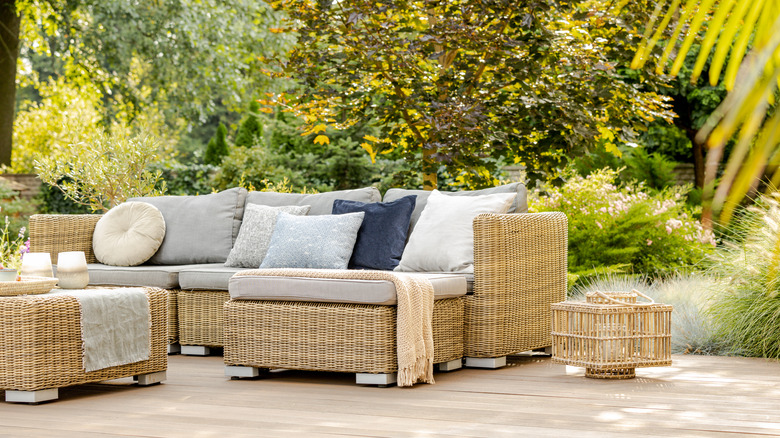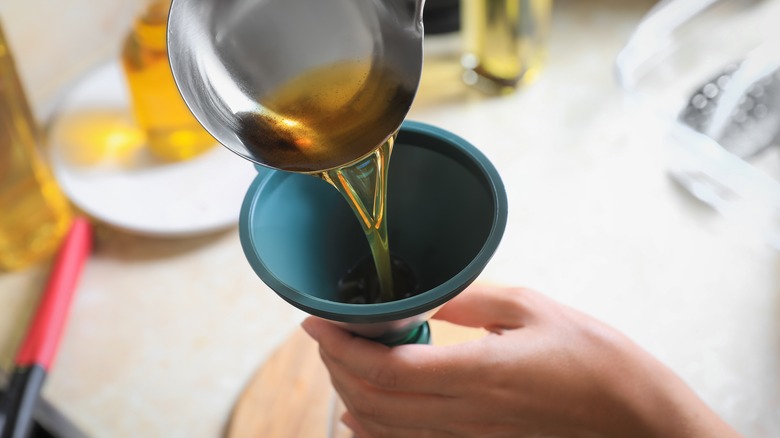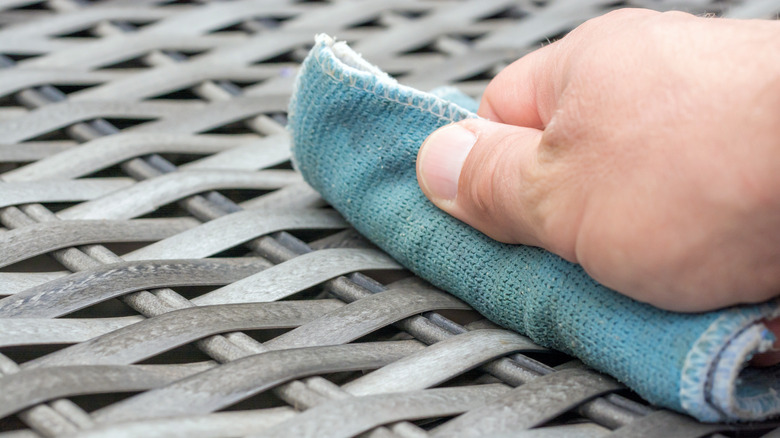Why You Want To Use Vegetable Oil On Your Wicker Furniture
Vegetable oil, often underrated and overlooked, proves itself as a wicker furniture enthusiast's best ally in preservation. This pantry essential, traditionally celebrated for its role in culinary masterpieces, conceals a surprising secondary purpose. Beyond serving as a base for frying, it stands out as a budget-friendly and astoundingly effective tonic to rejuvenate and prolong the vibrancy of your prized wicker furniture.
If you're someone who takes pride in your home's aesthetics, understanding the unique nature of wicker is paramount. This weaving wonder is not only a testament to wicker furniture's artistry and durability, but also a delicate creation that demands care. Peeling back the layers of wicker, you'll uncover a rich tapestry of plant-derived components. From the supple bends of rattan and cane to the robust resilience of bamboo and seagrass, wicker furniture is made from some of the finest materials.
Yet, like all things beautiful, these organically-sourced materials have their Achilles' heel. Though captivating, their charm and natural beauty also make them susceptible to environmental adversaries. Prolonged exposure to the sun's intense glare or residing in spaces where humidity is a rare guest can gradually strip these materials of their moisture, making them brittle and less flexible over time. But fear not, because vegetable oil is your saving grace in these scenarios thanks to this genius hack.
Why using vegetable oil is beneficial
Over periods of neglect or exposure, wicker tends to lose its inherent glow and appeal, becoming brittle and prone to breakage — even the strongest pieces can lose their flexibility. With this hack, vegetable oil steps in as a revitalizer and moisturizer for your wicker furniture. It deeply nourishes the fibers of the wicker and prevents it from becoming brittle, ultimately stopping it from cracking. This helps the fibers maintain flexibility and returns the furniture's natural sheen, making your cherished pieces look fresh and rejuvenated. Protection is another feather in vegetable oil's cap. When applied, it forms a protective seal that might guard against dust and external particles, ensuring your furniture remains pristine for longer.
Aside from the obvious focus on durability, factors like economy and environmental impact play a significant role. Instead of spending on chemical-laden specialized wicker conditioners or store-bought sprays, the solution is right in your kitchen. No additional costs, and no unnecessary store runs. Plus, with its rich consistency, a modest amount of vegetable oil stretches far, promising prolonged benefits for your furniture while minimizing waste.
How to apply vegetable oil on wicker
Before you begin this hack, ensure your wicker furniture is clean. Remember, vegetable oil works best on clean surfaces, so don't miss this initial step. Gently brush away any loose dirt or particles clinging to the furniture using a soft cloth or a dainty brush. Fear not if you notice any stubborn stains or areas that seem excessively grimy. Craft a simple cleaning solution of mild soap and water, then delicately wipe those areas. Patience is key; let the furniture stand until it's thoroughly dry.
Now comes the fun part: Pour a modest amount of the oil onto a soft cloth, and gently massage it into the wicker, approaching it section by section. It's crucial to focus on those high-traffic areas that seem dry or display signs of frequent use, such as armrests or the edges of seats. Your mission is to bless your furniture with a consistent, light coat of oil. Monitor your application so no section gets overly soaked. After the entire piece gleams with a fresh sheen, set it aside. Allow a few days (ideally between two and five) for the furniture to fully absorb the oil. After this period, examine its texture and finish. If you feel the need, don't hesitate to add another coat or two. Some oils demand multiple applications to reveal their full potential.


